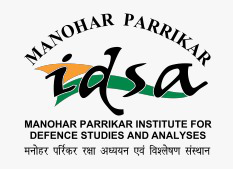Earth Hour 2010 and India
India has to not only fight over-consumption of resources in metropolitan cities but also make sure that the resources saved percolate down to its rural areas.
- Sarita Azad
- April 05, 2010
The Non-Traditional Security (NTS) Centre conducts critical research and analyses in wide-ranging areas like the SDGs, climate change, water, food and energy nexus, low-intensity conflict and the Arctic region. Challenging orthodox thinking and bringing in unconventional ideas, the Centre, has well-established experts with notable publications engaged in addressing the knowledge gaps, facilitating discussions, and interfacing with varied stakeholders. The Centre publishes the bi-monthly NTS Digest covering climate, food, energy and water issues. Members frequently lecture at military and training institutions and share their views at various national and international forums. As part of public awareness and sensitisation, they regularly contribute to mainstream newspapers and appear in media channels. The NTS Centre Coordinator served as Co-Chair of the Think20 Task Force of the G20 on ‘Accelerating SDGs: Exploring New Pathways to the 2030 Agenda’ during India’s G20 Presidency.
Current Projects
Centre members are working on inter-disciplinary projects like the ‘Indus Waters Treaty: Changing Dynamics and India’s Options’, ‘Human Security Policy for India’, and ‘Impacts of Climate Change in the Himalayan Region’. Areas of output include India’s SDGs targets, India-EU cooperation on climate change, India-Nepal cooperation on energy security, India’s climate adaptation and renewables approach, India-US maritime collaboration, and AFSPA and the Northeast region.
No posts of Books and Monograph.
No posts of Jounral.
India has to not only fight over-consumption of resources in metropolitan cities but also make sure that the resources saved percolate down to its rural areas.
The sloppy work of the IPCC in noting that Himalayan glaciers will melt by 2035 has raised many questions, with even the credibility of scientific opinion coming under doubt.
Given the divergence of views in the industrialized and industrializing countries as was demonstrated at Copenhagen, it is too early to expect any comprehensive result from the Copenhagen Accord. One needs to wait till June 2010 if the UN meeting at Bonn will yield a different outcome.
The Copenhagen Accord is weak and a step back from the Bali Action Plan which talked about four pillars of negotiations – mitigation, adaptation, financial support and technology transfer.
The Internet’s blurred boundaries and its existing vulnerabilities have led to unhealthy trends, which, if not addressed adequately, could pose severe problems.
The ramifications of an end to dollar-based oil trade would extend far beyond the oil market and would herald the beginning of a new international political order.
The security architecture of any state is normally based on traditional concepts like dealing with issues related to war and peace. This is no longer true in the 21st century when threats cannot be defined only in military terms. Swine flu pandemic is an example of this. Such threats demand solutions which lie beyond routine medical cure.
The United States and China signed a Memorandum of Understanding (MoU) on bilateral cooperation on energy, climate change and environment during their recently concluded strategic and economic dialogue (SED). This MoU follows from a previous agreement, the Framework for Ten Year Cooperation of Energy and Environment (TYF) that was signed during the 2008 round of the SED.
The United States House of Representatives passed a landmark legislation H.R. 2454, the "American Clean Energy and Security Act," by a narrow margin of 219-212 on 26 June 2009. This bill requires the reduction of nationwide greenhouse gas emissions by 17 percent of the 2005 level by 2020 and 83 percent by 2050 through a "cap-and-trade" program under which companies would buy and sell emissions credits. The bill has more hurdles to cross before it becomes a law.
The idea is to launch giant orbiting solar collectors into space, where there is no night, and beam the power to receivers on the ground, where it is fed as electricity to the grid. Long championed by former President Dr. Abdul Kalam, and the Aerospace Society of India (AeSI), the idea is seen as a long-term solution for energy security and climate change, and the most environmentally benign and scalable renewable energy option, which deserves its own focused development programme.



